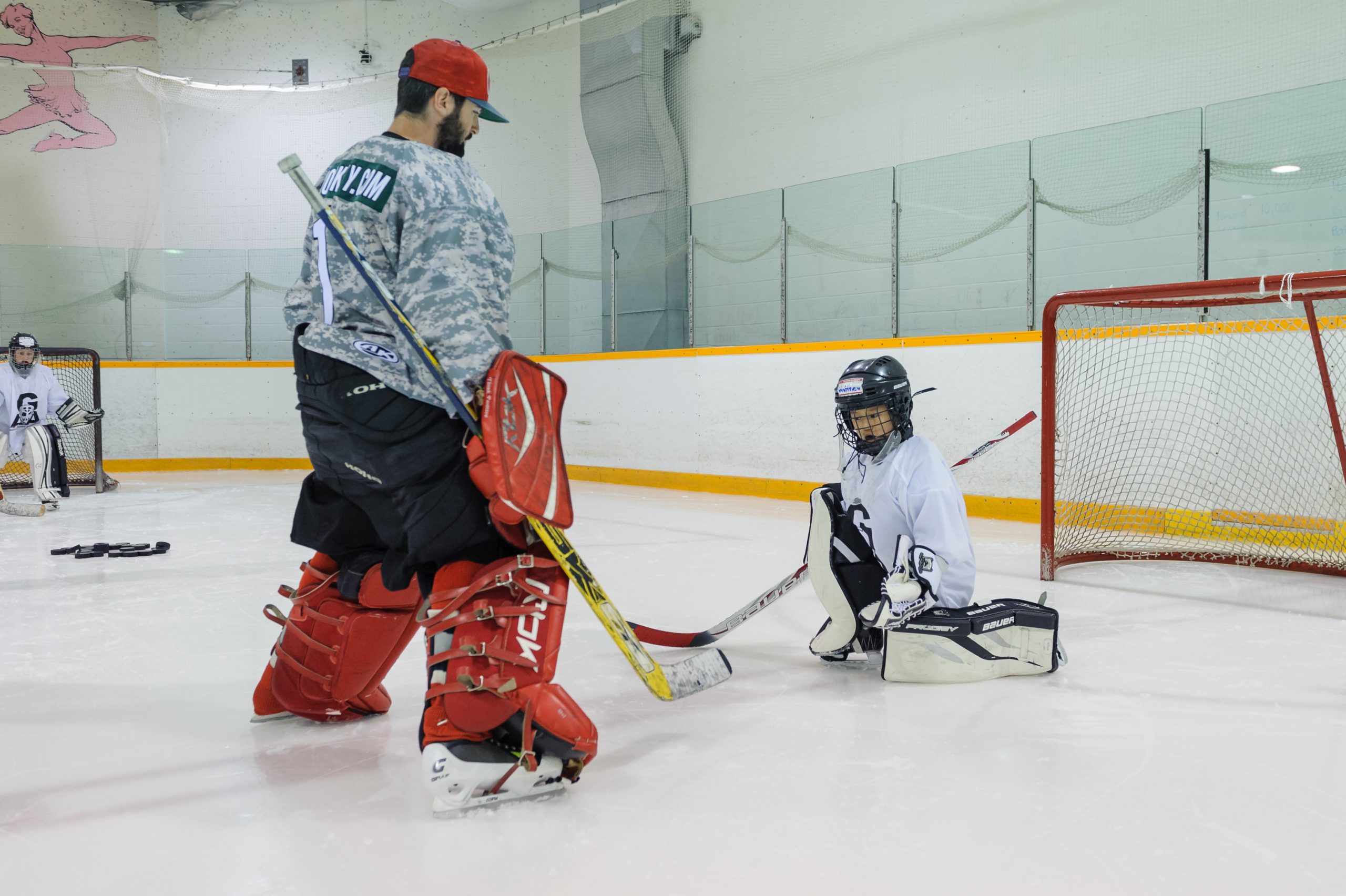
Goalie Training: Control and Speed
Goalie training at many levels emphasizes the need to become faster with standing and sliding movement. However, we’re seeing an increase in the amount of goaltenders who although may be fast, lack control and an understanding of angled recoveries.
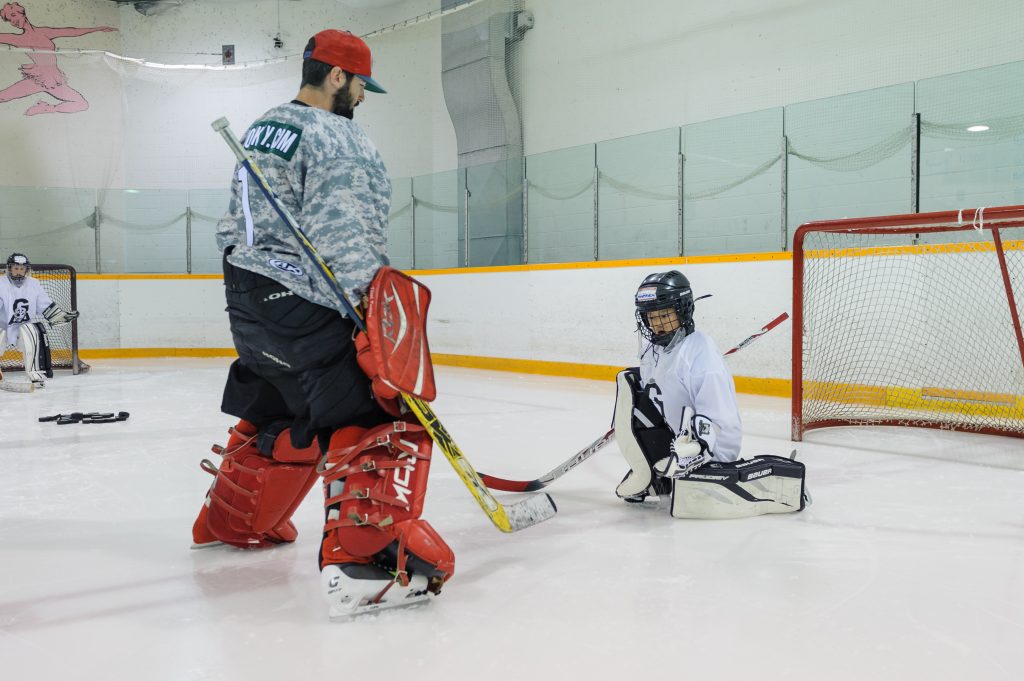 During goalie training, teaching control before speed and throughout a goaltender’s progression should be done at the earliest foundation stages while providing students with plenty of hands-on coaching. However, we’re seeing plenty of new students and goalies in evaluations who are lacking in this area.
During goalie training, teaching control before speed and throughout a goaltender’s progression should be done at the earliest foundation stages while providing students with plenty of hands-on coaching. However, we’re seeing plenty of new students and goalies in evaluations who are lacking in this area.
Just last season, I had been training a 16 year old goaltender that even at an elite calibre of hockey, lacked an understanding of angled recoveries. Similar (in a way) to hearing about how some teenagers are getting through high school without being literate, how can this happen? It needs to change now!
“Faster”: The Latest Buzz Word
During games and within goalie training environments, goaltenders need to move quickly while reacting with explosive speed, and we’re consistently hearing from the media that the game continues to become faster. But how does additional speed of the flow of the game affect the goaltender in their position? Essentially, it causes the need for the goaltender to also become quicker. What students aren’t hearing however (until now), is that they’re focusing on the wrong things during goalie training environments by attempting to add speed rather than balance, stability, and efficiency. This causes additional poor habits to creep into their game play.
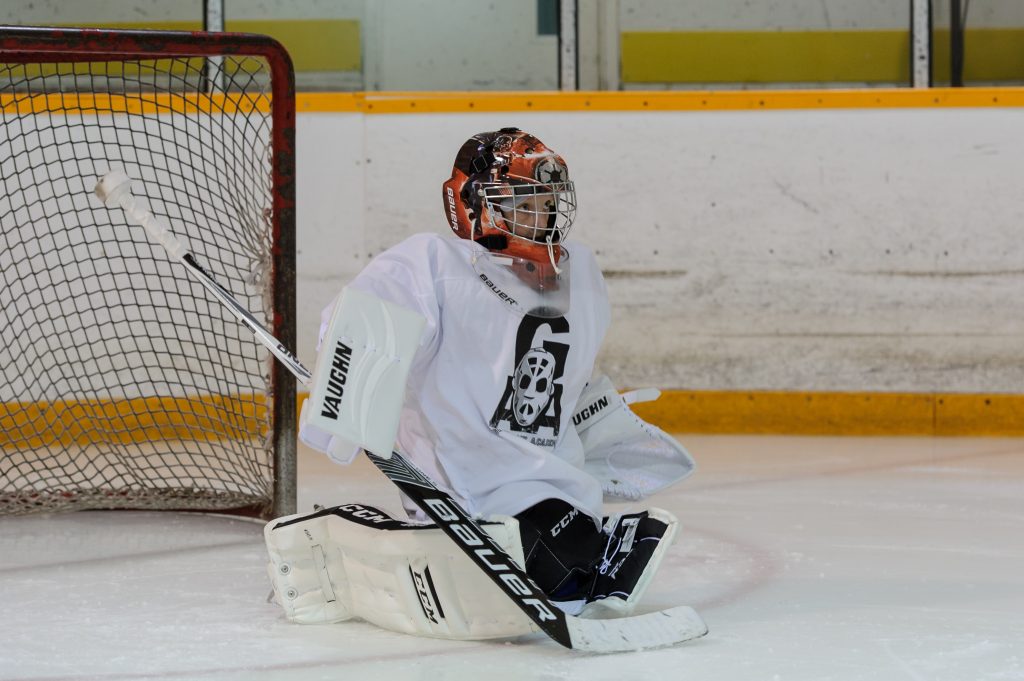 An angled recovery allows goaltenders the ability to obtain a position which is square to the puck. However, in scramble scenarios, goaltenders may be required to adjust the depth of their crease in order to keep up with the timing necessary to ensure that they are indeed square to the puck. Whenever a goalie allows themselves to slide out of their crease, or appear to be unable to keep up with the speed of the puck’s bounces within a scramble scenario, it’s normally due to a gap in their angled recoveries game.
An angled recovery allows goaltenders the ability to obtain a position which is square to the puck. However, in scramble scenarios, goaltenders may be required to adjust the depth of their crease in order to keep up with the timing necessary to ensure that they are indeed square to the puck. Whenever a goalie allows themselves to slide out of their crease, or appear to be unable to keep up with the speed of the puck’s bounces within a scramble scenario, it’s normally due to a gap in their angled recoveries game.
As mentioned above, balance and stability should always be a priority with on-ice goalie training. Starting with the goaltender’s skate blades, and working up to the shoulders are part of our progressive development plans to ensure efficiency in everything that we do as goalie coaches at Goalie Army Academy.
It may be difficult to apply new balance or stance techniques during goalie training sessions because poor habits are difficult to break out of. But if there’s a will, there’s a way. Younger goaltenders may be easier to mold and or willing to try new techniques however, to aid in their development. Therefore, the earlier we’re able to get goalies to become “thinkers” willing to analyze their technical game regularly during goalie training sessions and their team practices, the better.
Goalie Training – Breaking Down Slide Movement
While implementing adjustments to ready stances at our goalie training sessions, it’s also important to place emphasis on butterfly drops, and slides in order to ensure that goalies are becoming quick to respond and react (see R3E System) quickly and efficiently.
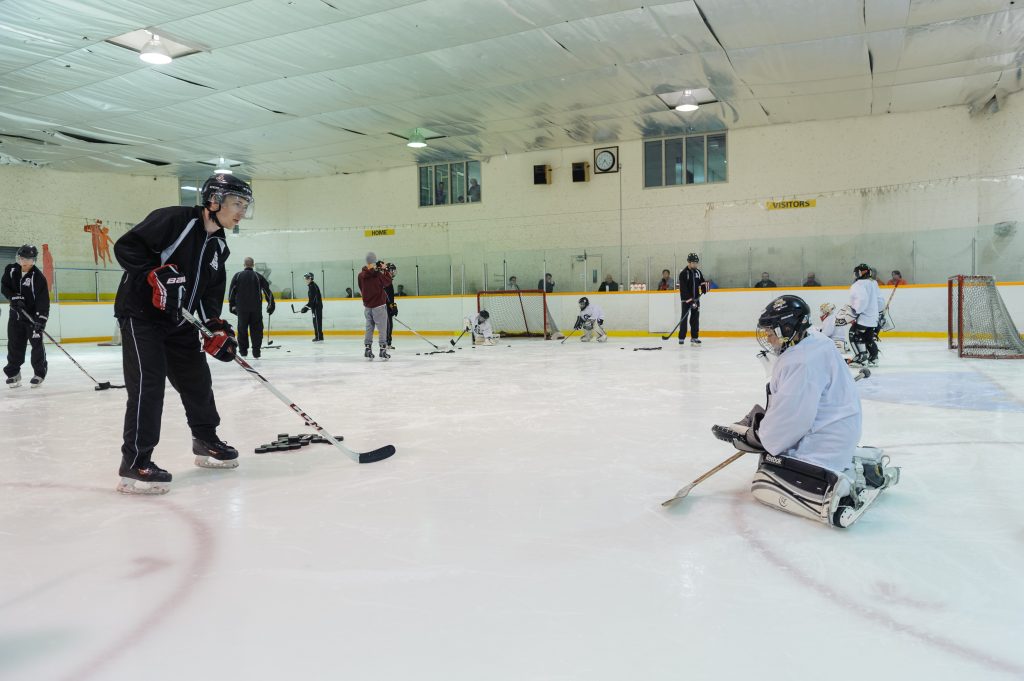 Head & Shoulders
Head & Shoulders
Much of the response begins with head movement in order to recognize potential threats and to obtain a clear sight of the puck. From there, where the head turns, the shoulders should follow.
By adjusting the angle of the shoulders to square up to the puck, goaltenders are able to determine which path is necessary for a butterfly slide.
Edges and Power Adjustments
How the goaltender lifts their outside (power leg), and place their edge to the ice will determine which path they actually slide along.
Equally important is the necessity to adjust the power of each push in order to time each slide for contact with the puck in a square position to the puck’s position. Therefore, goalies want to analyze the threats around them, and determine how much power is truly necessary for each push in order to avoid over-sliding.
The ability to recognize proper timing is essential for this process. This is why the application of theory and game situation exercises to build a better understanding rather merely doing drills during their goalie training sessions is also so important.
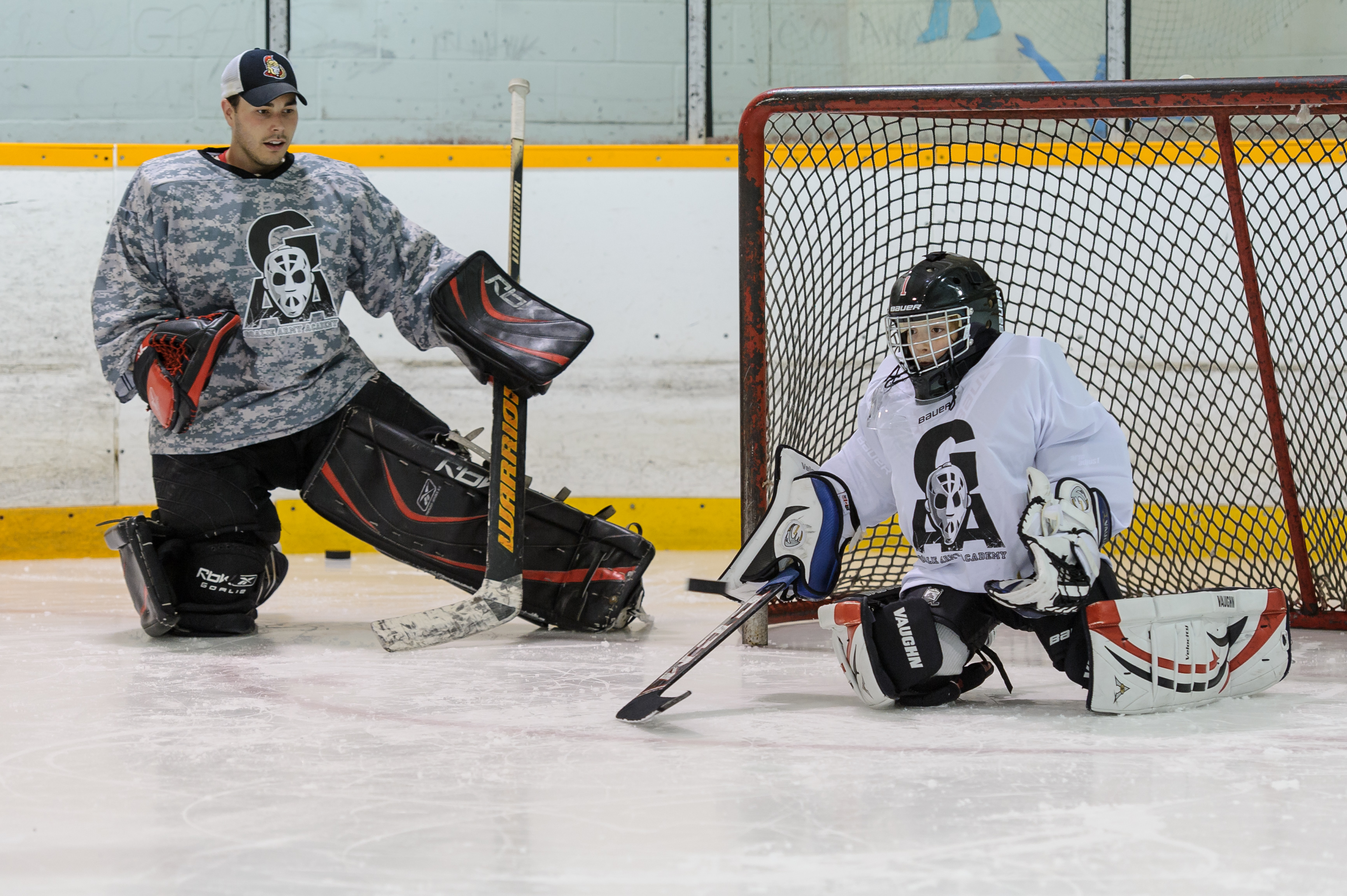 Momentum vs. Stability
Momentum vs. Stability
One of the most common reasons we’re seeing goalies fall out of position during scrambles, and breakaways, is because goaltenders attempt to use their momentum rather than apply proper stability of their upper body when transitioning into butterfly slides or angled recoveries.
We’ve all seen the goaltender whose arms are moving are all over the place when attempting a quick slide to make that amazing last-second save. But moving the arms, or even just one arm away from the puck throws the goaltender’s weight distribution off, which causes a ripple effect. Because the weight of the upper body shifts away from the puck, more pressure is placed on the mid-to-heel of the skate’s blade. This results in a more lateral slide.
If the goaltender is lucky, they will immediately recognize that they are not sliding along the necessary path, in which case they may apply a harder core twist in order to enable their shoulders to square up to the puck again. However, depending on the scenario, it may already be too late.
Implemented into our year-round goalie training programs, emphasis on balance, stability, efficiency, and theory are essential to the progressive development of our students. In order to excel as a goaltender, students need a true foundation and an in-depth understanding in these areas. Once obtained, becoming “faster” and more powerful will happen naturally when combined with determination and a strong work ethic.

Leave a Reply